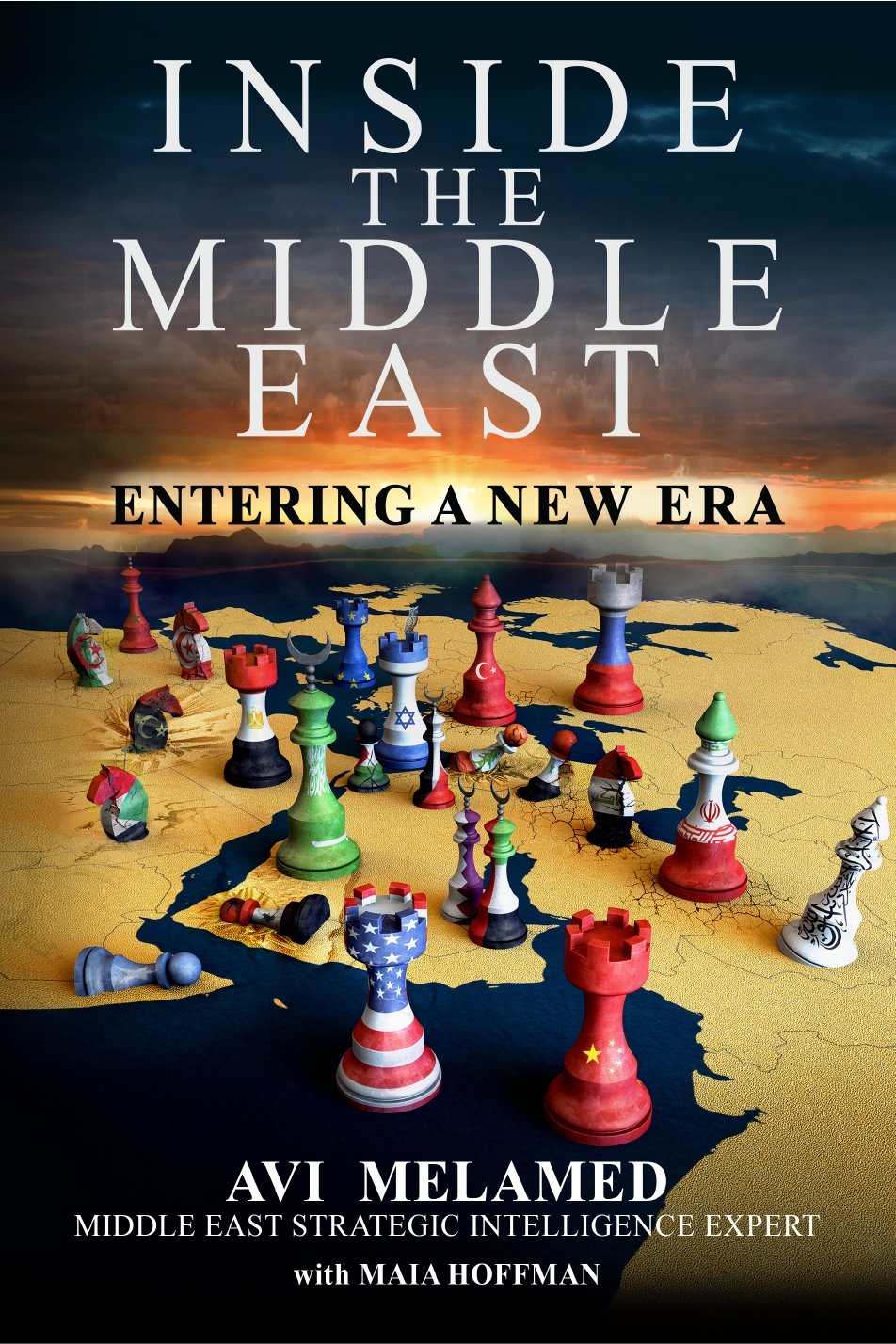|
Getting your Trinity Audio player ready...
|
Countdown to an Attack on Syria: Tomahawks and Smoke Signals
As a Western coalition (including Turkey) military strike, led by the USA, targeting the Assad regime in Syria seems inevitable, a delicate and complex process of “message exchanges” is taking place between the West and the Iran–Assad axis.
As strange as it may sound, the purpose of this process is to come to a kind of unwritten, unspoken understanding – a “deal” if you wish – between the sides regarding the scale and magnitudeof the West’s military strike in Syria that will reflect both sides’ interests – as well as restrictions – in the current situation.
What are the interests and restrictions of the Iran-Assad axis?
Two main factors guide the Iran-Assad axis:
a) The Iran-Assad axis is well aware of the fact that the West has almost no choice but to conduct a military strike against Syria following what seems to be a large scale use of chemical weapons by the Assad regime last week in Damascus
b) Currently Assad’s survival is in the strategic interest of the axis
Iranian and Syrian formal spokesmen threaten that a Western military strike on Syria will set the Middle East in flames. Senior Iranian and Syrian officials also warn that a strike will result in retaliatory attack on Israel. The subtext of these messages is that the Iranian-Assad axis is not interested in carrying out their threats. The intimidations actually signal the willingness of the axis to sustain a limited military strike in Syria which will not force the axis to go through with its threats. Paradoxically, the axis’ threat to set the Middle East on fire aims to prevent the realization of the threat…
What are the interest and restrictions of the West?
A military strike by the Western coalition seems inevitable. The strike aims to convey a clear, strong message regarding the red lines that most of the international community is not willing to compromising on. At the same time, the coalition must take into consideration the fact that a strike might generate a process which could spin out of control and lead in a short period of time to a massive eruption which would be counter to both sides’ interests. The military strike must be then carefully calculated.
What could the characteristics and scale of strike against Syria be?
I think it is reasonable to expect that the targets attacked will not be limited to tactical targets, but will be limited in scale and magnitude. In my assessment possible targets are:
- Some of the missile bases and launching sights
- Chemical weapon research centers (perhaps also some bunkers which store raw chemical materials provided the impact of such an attack will not endanger civilians)
- Weapons and ammunition factories and ammunition storage bunkers
- Some communication centers
I believe that symbolic places and or sites of ultra-strategic importance – such as the Syrian Presidential Palace in Damascus or Tartus Harbor will be left out.
Assuming a strike along the lines outlined above will take place, the obvious question is what might the retaliation of the Iran-Assad axis be?
I tend to assume that the axis will choose a confined, relatively small scale retaliation which will be carried out by its proxies (for example Islamic Jihad in the Gaza Strip).
Possible characteristic of the axis’ retaliation are:
- Shooting at Israeli military posts in the Golan Heights
- Rocket attacks (launched from the Golan Heights, South Lebanon, the Gaza Strip and the Sinai Peninsula) on Israeli cities (but not major urban areas)
- Shooting at Jordanian military posts along the border
- Rocket attacks on Jordanian cities (for example Ramtha in northern Jordan and Aqaba in southern Jordan)
- Attacks in the form of car bombs in Turkey
- Rocket attacks into Saudi territory from north Yemen
- Terror attacks inside Saudi Arabia, Qatar and Bahrain focusing on oil infrastructure and European and/or American targets
- Terror attacks on Israeli, American, European and Arabs targets around the world
Israel is an important part of the equation. Though Israel expresses very clearly that it has nothing to do with the war in Syria and wishes to be left out of the war, it is clear that Israel – against its will – will be dragged into the battle ground. The Iranian-Assad axis’ retaliation will focus on Israeli targets.
In 1991, a Western–Arab coalition attacked Saddam Hussein’s forces forcing the Iraqi dictator to end his occupation of Kuwait. Saddam retaliated by shooting missiles on Israeli cities hoping to evoke an Israeli retaliation which would result in the disintegration of the West–Arab coalition. The Israeli government conducted a policy of self-restraint and thereby foiled Saddam Hussein’s plan.
The 1991 case will not repeat itself in the current situation. Should the Iran-Assad axis attack Israeli targets Israel will retaliate; an attack on Israeli civilian targets and infrastructure will likely result in a stronger Israeli retaliation. Guided by its strategic interests, it is reasonable to assume that the Iranian-Assad axis will be extremely cautious in choosing the targets in Israel, the type of weapons and the magnitude of the attacks.
The Iranian-Syrian axis is extreme and dangerous. However, as I have always said, they are not suicidal; this axis knows how to do the math. The Iranian–Assad axis is struggling with serious challenges. It is clearly not the best time for that axis to risk a massive Israeli retaliation.
When is the Western attack likely to take place?
Obviously, I don’t have the battle plans or a crystal ball. However, there are two important factors to consider:
One: Next Wednesday (September 4) begins the Jewish High Holy Days – three weeks of Jewish holidays that begin with Rosh Hashana (the New Year). Though Israel is not a part of the coalition, it is obviously a part of the consultations and the coordination process. It is likely to assume that Israel will bring that factor to the attention of the planners and decision makers within the coalition.
Two: The Coalition’s attack is not an attempt to overthrow Assad. The attack aims to convey a message that the West will not tolerate the use of weapons of mass destruction. This message cannot evaporate or fade away – if the West wants Assad to suffer serious sanctions as a result of his actions the attack must be carried out within a reasonable time frame.
When I think about the goals and restrictions of each side and taking into account the above two factors, it leads me to assume that the coalition’s attack is likely to take place within the next 24 – 96 hours. If the scenario plays out according to my analysis the whole episode could be over by the middle of next week (including the part of the Iranian-Assad axis’s retaliation on Israeli targets). However, one also should take into consideration that some of the Iranian-Assad axis’s retaliatory moves (like attacking targets worldwide or attacking other states in the region) could be postponed.
It is quite clear that the upcoming week will witness some substantial rise in the level of tensions in the region. As for itself that is bad news. The more bad news is the fact that we should remind ourselves the very most important lesson every fire-fighter knows: fire has a life and will of its own.
If you want to have a better understanding of the news and what really drives the unfolding events…
Read the latest book of Avi Melamed,
INSIDE THE MIDDLE EAST | ENTERING A NEW ERA, available now >>>
Follow me on Twitter @AviMelamed; Facebook @InsideTheMiddleEast; for more Videos on YouTube https://www.youtube.com/c/AviMelamed
I can always be reached at Av*@********ed.com
































































